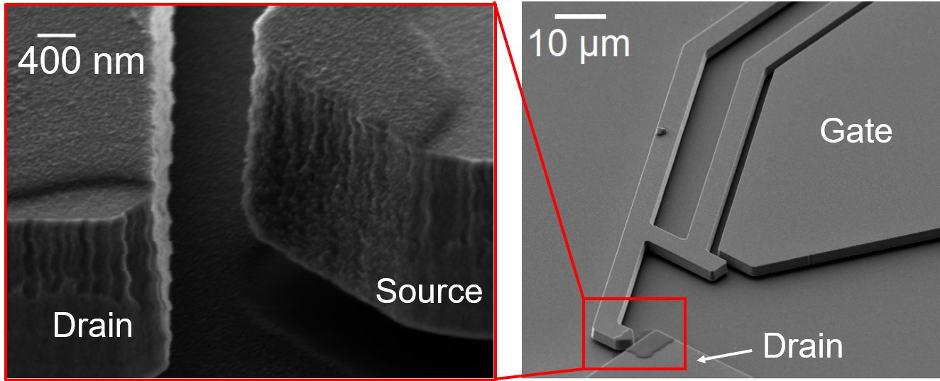
A microelectromechanical relay with the contact electrode surfaces covered by a 100nm thick layer of nanocrystalline graphite (inset) Credit: Bristol University
While solid-state transistors have long been the workhorse of electronics, there is a limit to their energy efficiency as they tend to leak current, particularly at higher temperatures.
Microelectromechanical and nanoelectromechanical relays have zero current leakage, and consume very little power. They can also operate at much higher temperatures and levels of radiation than transistors.
The devices could be used to create extremely energy efficient electronic components with integrated sensing, processing and actuation, capable of operating in very harsh environments.
However, making the devices reliable has so far proven a challenge, according to Dr Dinesh Pamunuwa, who leads Bristol University’s Microelectronics research group.
“They are essentially nano-switches, with two electrodes that come into physical contact and break contact millions of times,” he said. “That causes the contact to degrade, so after a certain amount of cycling the relays stop working.”
Now he and colleagues at the Universities of Bristol and Southampton, working with California-based Microsemi, have demonstrated that the relays can be made to operate reliably by coating them with nanocrystalline layers of graphite.
In a paper published in the journal Carbon, the researchers reveal that by coating the relay tips in a thin film of the graphite, just tens of nanometres thick, it protects them against degradation over millions of switching cycles, and provides a reliable electrical contact.
The graphite effectively acts as a conducting solid lubricant, protecting the relay electrodes as they make and break contact, Pamunuwa said.
“The carbon reduces the surface forces between the two contacting surfaces,” he said.
The research was funded by the EU, DSTL and Innovate UK.




Project to investigate hybrid approach to titanium manufacturing
What is this a hybrid of? Superplastic forming tends to be performed slowly as otherwise the behaviour is the hot creep that typifies hot...